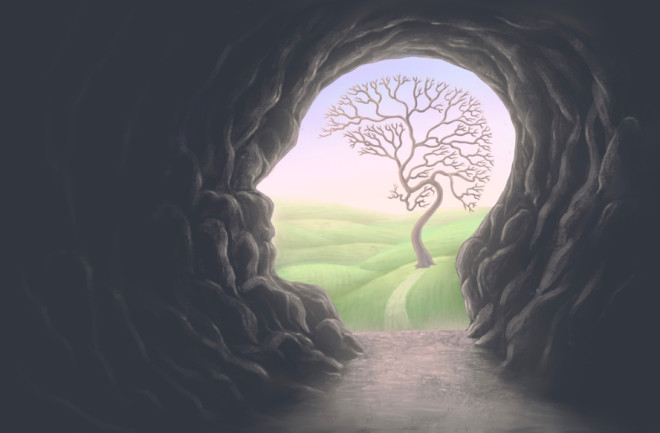I still remember the nightmares I had as a kid — sometimes with vivid clarity. In one recurring dream, for example, my parent’s German Shepherd transformed into a monstrous beast with glistening fangs and glowing eyes. Yet the older I got, the more mundane my dreams became, mostly populated by normal social interactions with friends and acquaintances.
It's no secret that dreams vary wildly in tone and content. What’s more, scientists have found that the different types of dream states — from lucid dreams to nightmares — can be just as varied as our waking states. But how do our dreams change across our lifespan, in general?
“There is surprisingly very little data on this question,” says Patrick McNamara, a neurologist and dream researcher at Boston University School of Medicine. “From one or two studies, it looks like aggressive interactions in dreams tend to decline with age.”
Still, researchers are continuing to dig into the depths of our subconscious to better understand the psychology and neuroscience of dreaming. Here’s what they’ve learned about how our dreams evolve as we age.
Read More: Why Do Some People Always Remember Their Dreams, While Others Almost Never Do?
What Do Children Dream About?
One of the biggest differences between children’s and adult’s dreams is that children tend to dream about animals much more frequently.
“Kids dream a lot about animal characters and close family members,” says McNamara. “As well as best friends, and unusual characters and monsters.”
Much of the foundational work on children’s dreaming was conducted by sleep scientist David Foulkes in the 1970s, whose research continues to dominate the field. In a laboratory study of 3- to 5-year-olds, Foulkes found that dreams tended to be infrequent and relatively brief, lacking movement and a clear storyline — and indeed featured animals. For example, a preschooler’s dream might be as simple as “I was sleeping in a bathtub” or “[There was] a fish in a bowl on the riverside.”
Between the ages of 5 and 8, according to Foulkes, children’s dream reports became longer and more frequent, featuring complex narrative structures and an active representation of themselves. Around the ages of 9 to 11, per a longitudinal study by psychologist Inge Strauch, “dreaming is, for the most part, adult-like.”
Read More: Yes, You Can Control Your Dreams: The Strange Science of Lucid Dreaming
What Do Adolescents Dream About?
In adolescence, recurring dreams can share common themes. A 2015 study by scientists at the Université de Montréal found that young people between 11 and 15 years old dreamt the most about confrontations with monsters and animals, followed by dreams about physical altercations, falling and being chased
Still, there are serious limitations when it comes to studying dreaming in children. While some scientists argue that the only way of reliably investigating dreams is in a lab, others have raised concerns that the unknown environment may make it difficult for children to talk about their dreams — or even distort the dream itself.
Similarly, relying on anecdotal reports from dreamers after the fact raises the possibility that their recollection of the experience — what’s known as dream recall — can become muddled, too.
Read More: Why Do We Dream? Science Offers a Few Possibilities
How Do Dreams Change in Adulthood?
Compared to children and adolescents, adults tend to report dreams that feature less physical aggression — and fewer situations in which the dreamer is a victim. Beyond that, adults tend to dream about, well, other adults, from friends to significant others.
“Adults dream a lot about other people; usually familiar people,” says McNamara. “And there is a lot of social interaction between characters.”
There are some notable differences, though, particularly involving gender. Men tend to dream more about physical aggression, often taking the form of hostile confrontations with other men. Women, meanwhile, are more likely to dream about harmonious relationships with both men and women.
Read More: Why Some People Can't Visualize Images and May Dream in Words
What Do Dreams Look Like in Old Age?
In old age, dreams tend to be more reflective; older adults often dream about the legacies they’ll leave behind, as well as interactions with loved ones both living and dead. An overall decline in the ability to recall dreams has been reported in the elderly, as well.
Dreaming still occurs at the end of life, as well. Studies of patients in hospice care have found that these dreams can be particularly vivid and intense, including dreams of travel and reunions with deceased relatives.
“Dreams at end of life have been studied with fascinating results,” says McNamara. “My impression from the literature is that you get a lot of ‘preparatory’ dreams that are about preparing to take a train or plane somewhere and so forth. It’s as if the dream knows when you are about to die.”
In other words, dreams follow us from some of our earliest moments to our very last.
Read More: Hospice Physician Shares Insights on Visions and Near-Death Experiences

